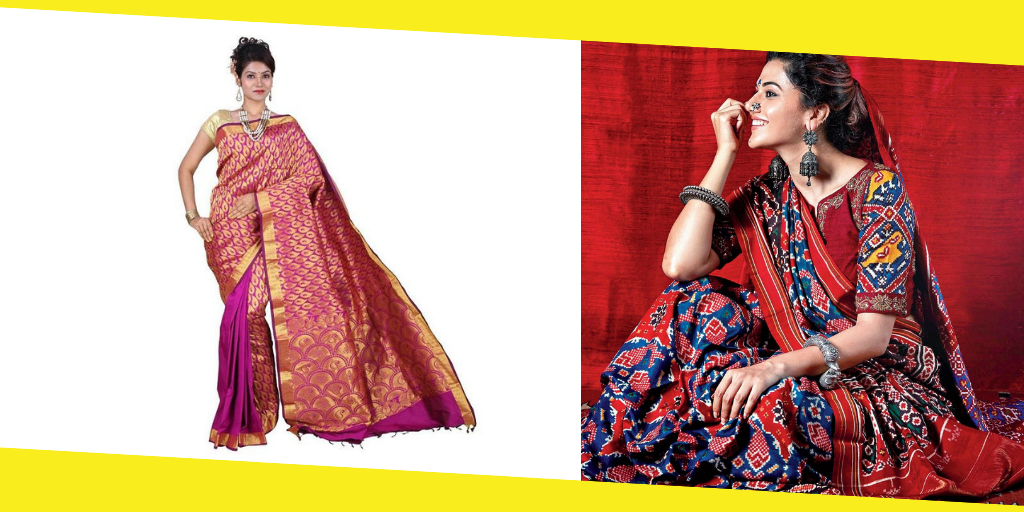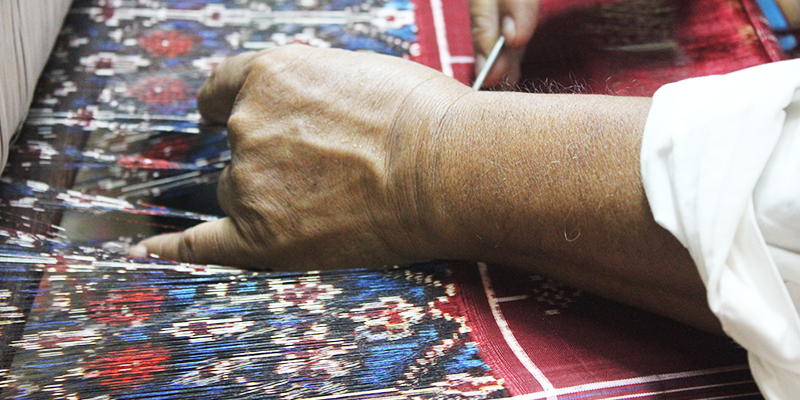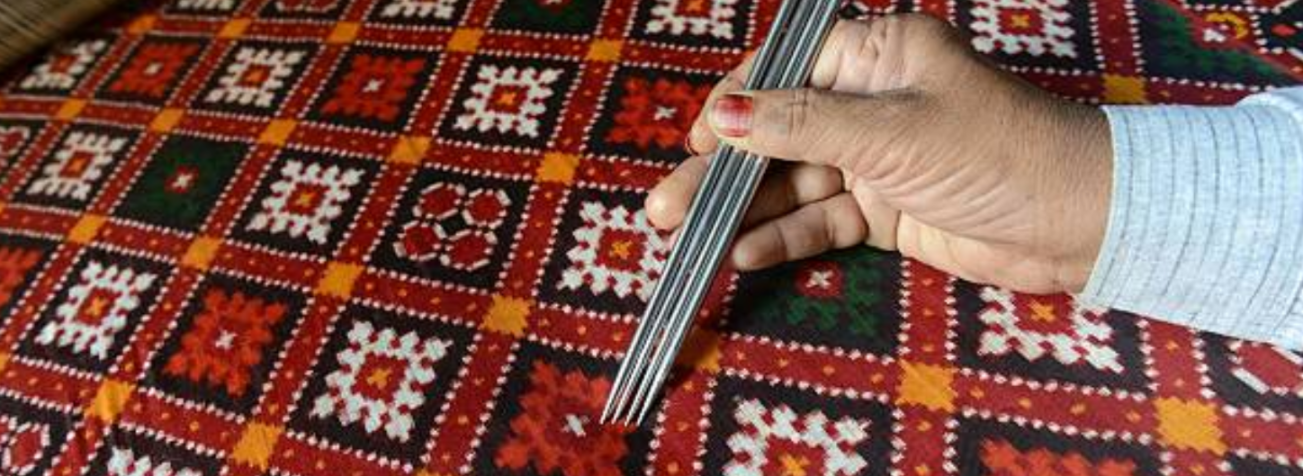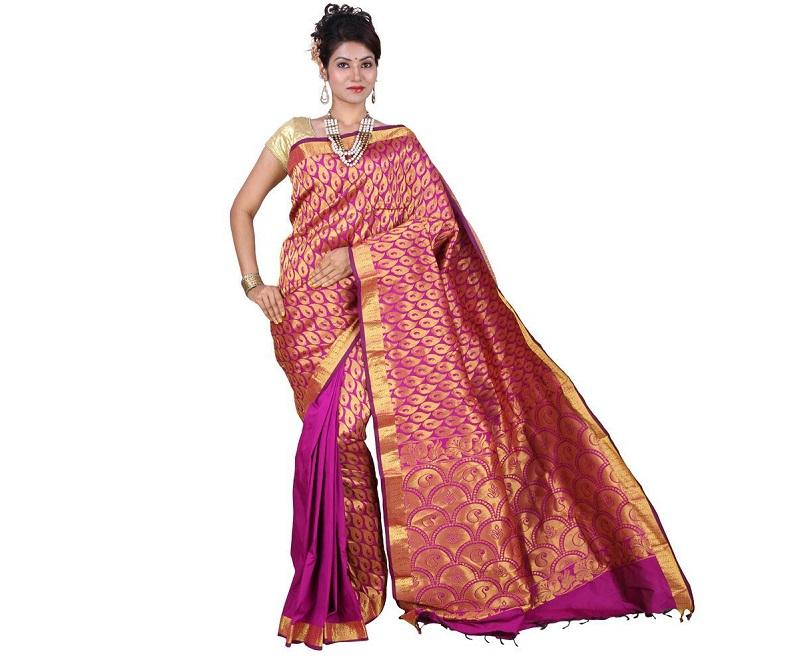All You Need to Know on Patola Sarees
This post was last updated on November 19th, 2024

If you are from outside India or have little knowledge on the cultural dresses, you might think a saree is a saree regardless of where it originates from.
However, a little digging into the history of the saree reveals that some sarees have a prestigious reputation and were only worn by select members of the society, while others were more commonly used by the lower social classes.
Patola sarees are part of the ‘exclusive sarees’ that were worn by aristocrats, and today still hold the titles of the more expensive sarees that are only worn on very special occasions like weddings. All this is thanks to the amount of tedious work that goes into making them, which can sometimes take months or years, and the result is a very unique pattern in the weaving that you cannot replicate.
Here are some facts you should know about the Patola saree.
History

The history of the Patola saree goes back for thousands of years. Even in the Jain holy book of Kalpsutra written 2000 years ago, and various folk tales from the Telugu to Gujarati, these sarees get a mention. They originated from the town of Patan, which is located in Gujarat.
The known modern history begins with the silk weavers originating from the salvi caste (they were found in the Maharashtra and Karnataka states) who selected Gujarat as their home in the 12th Century. They went there to intentionally get the patronage of the Rajputs from Solanki, who were ruling Gujarat at the time, as well as parts of south Rajasthan and Malva.
The word ‘Patola’ is a derivative of the Sanskrit word ‘Pattakulla’. The sarees are considered as double ikat sarees, which is a very intricate resist-dyeing process that uses the weft and warping techniques of weaving. it takes an average of three people do weave the fabric for close to six months or even longer, depending on the intricacy of the final product.
Sources of inspiration for the fabric

The initial people to manufacture the Patola silk were the Jain class, the Salvis. These fabrics are heavily influenced by the natural surroundings, such as food items and animals.
The weaving process
In the first step, the weaver ties cotton thread to the yarn after they have decided on the pattern that will be on the final product. It is only a highly skilled artist that is allowed to tie the yarn, because the process is greatly time consuming and intricate.
In fact, the measurements need very careful scrutiny as they can be as small as 0.01 inches – any displacements that occur during the setting process can ruin the entire design. In addition, there are different colours that will be used at different points of the saree, so they all must be carefully aligned.
One of the unique aspects of this saree type is the loom, which is tilted to one side and allows tow people to work on it simultaneously. In addition, because the pattern is that of a double ikat, the process needs greater precision and concentration. The final product usually looks exactly the same on both sides because of their reversible nature.
Colours used
The dyes are usually made from natural materials like indigo, catechu, turmeric, cochineal, madder roots, harde, pomegranate skin, natural lakh, kesudo, ratnajyot, manjistha, marigold flower, and so on. there is the use of other ingredients such as potassium dichromate, ferrous sulphate, tin chloride and copper sulphate are also included, which makes the final products to be a range of colours – although they are dominated by yellow, bright red and dark green.
Varieties and motifs

Basing on their origin, there are two types of the Patola saree – Patan and Rajkot. The Rajkot are the single ikat types that are resist dyed on their vertical threads, while the Patan is the double ikat weaving style that is horizontal in their resist dyeing.
The motifs are varied and are dependent on the communities that added their own imprint on the silk. Whether it is Muslims, Hindus or Jains, each of them left their own stamp of influence on the designs. For instance, the Ismaili Shi’ite Muslims use Vohra Gaji Bhaat, the Jains prefer using geometric patterns and abstract designs, while the Gujarati Hindus enjoy the paan, elephant, parrot, girl and flower designs.
Other facts to note
Out of 700 original families that used to make the Patola saree in their beginning, only three of them do so today. There is no use of power looms or computers wither, unlike many of the other saree types that use a combination of handloom and power loom weaving techniques today. In fact, part of what makes the Patola saree so expensive is the amount of mental and physical labour that goes into them – including mental calculation, undivided attention, and great levels of hard work.
It is interesting to know that the measurement tapes that are used by weavers today were created 1000 years ago. These are different from the conventional measuring tape, as they can measure up to 100th of an inch.
Because the saree is entirely made of silk, it can last for up to 100 years. The weavers never use cotton, as they consider it to be a low quality material that can tear after 40 or 50 years. The final design of the saree allows the wearer to wear it on both sides (both the back and front are exactly the same).
The biggest advocates for Patola sarees are actually Indians from the diaspora, as well as foreign nationals. For instance, one of the legendary Patola weavers called Kanhiaiyalal Savi has taught Patola weaving techniques to various design schools outside India – including the Honolulu Academy of Arts in Hawaii, and even taught the former U.S. President Jimmy Carter and his wife about it as they were visiting India.
Final thoughts
The Patola saree is a highly expensive one – however, if you can afford it, it is worth your money. This is because of the high quality of work that goes into its production, and the rich history it bears.
Recommended For You
Sharara Suit – The Outfit that Gives Ravishing Look to Women
Most Inside
Most Inside offers high-quality recommendations and valuable updates to enhance all aspects of your life, providing premium guidance and enriching experiences.




